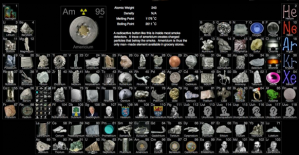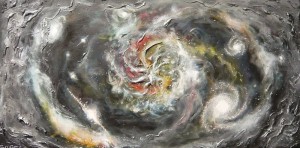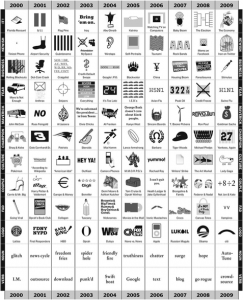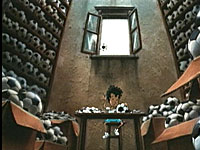A nice graphic published by the New York Times showing change over the last 10 years.
Month: January 2010
Mass, acceleration and Christmas trees
Combining math, science and culture. Christmas tree rocketry.
Auto-Tune and the trajectory of fads
This intelligently done history of Auto-Tune is wonderful for several reasons. First, it has a simple, elegantly executed story arc, where it describes the trajectory of a fad from introduction to over-exposure to parody/remix and finally to a new equilibrium. And it discusses these concepts in a clear and entertaining way.
Know Your Meme: Auto Tune (featuring “Weird Al” Yankovic) from Rocketboom on Vimeo.
Second, Auto-Tune is a great example of something that was created for one purpose but finds a new life in a completely different discipline. The technology was created for analyzing seismic signals in petroleum exploration before being applied to music. It is amazing what can come from working with people of diverse backgrounds, and having a broad appreciation of the world. Group work is important.
Third, in touching on parody, it brings up an issue that adolescents, in particular need to understand; parody is not just a cheap joke, it has something important to say. It uses humor to address significant issues:
While making fun of something is easy [mockery], parody requires a study of both technique and form, before creating its own recontextualization.
Third, the overexposure stage of fads and memes is something everyone should be aware of. The meme infiltrates so many aspects of the culture that it becomes irritating. As a Middle School teacher I see it primarily in the language my students use. By introducing this concept to my student, we now have a common language for talking about at least one type issues in the classroom.
Finally, equilibrium. An important concept in natural and social science, the concept is neatly encapsulated in how the fad starts off small, overshoots and gets smaller but does not disappear as there remains some lower level of use.
UNICEF cartoons on Children’s Rights
In looking for appropriate resources on Children’s Rights, I found some neat little cartoons from UNICEF in Flash and RealPlayer formats.
Some other simple UNICEF material:
- A leaflet with brief, simple summaries of all the rights.
- A short booklet for younger kids
Periodic table trivia

This online periodic table by Theodore Gray has pictures of all the elements. Some are in pure ingots or crystals, others in example applications, and some in ore form. What I find most interesting is there is a bit of trivia about each element when you hover over its picture. Also, the images of the noble gasses shows the colors they emit when excited with electricity (e.g. neon lights), which is kind of cool.
The Big Bang
Good blogging style, like good presentations, should be multi-modal. On the internet we’re limited to text, images and sound/video so we do the best we can. I tend to be text oriented so I try to add an image to each post. In an earlier post on how science works I snagged an image by cédric sorel that he contributed to Wikipedia.

Each time I see this interpretation of the Big Bang I am astonished once again. The textures give the impression of a three-dimensional cut-away, and the detail in the spiral galaxies swirling away from the center just pulls my attention like a strong magnet lines up iron filings.
The image is in the public domain and a high resolution version can be found on the Wikimedia Commons page (http://commons.wikimedia.org/wiki/File:Big_bang.jpg).
How science works

Science progresses from failure. When experiments don’t work, we often learn more from why they did not work than if they had given us the results we expected. Frequently, it is how scientists deal with this adversity that results in advances in science.
We build models of the world, but by definition these models are incomplete. They are only metaphors for the actual world. When our models fail, we learn, and we expand our models.
Arno Penzias and Robert Wilson won the Noble Prize for Physics for discovering the background noise left by the Big Bang. They only did so after spending a year trying to figure out why their radio telescope kept giving them too much static for them to use for their intended purpose (to map the universe’s bright stars).
World record paper airplane
How to build the “Sky King”, the world record holder for longest flight of a paper airplane (27.9 seconds).
The craft was designed by Takuo Toda, who also plans to launch a paper airplane from space using another design and heat-resistant paper.

